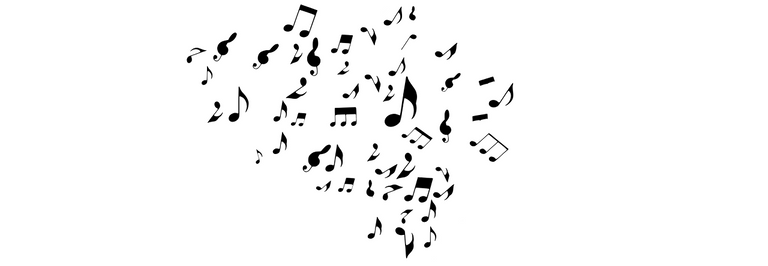
In the previous post, I shared the Objective and introduction of my first thesis.
In this post, I would like to share the history of the acoustic snitch !
I'll translate it from French to English !

Since prehistoric times, humans have been interested in acoustic phenomena, but it was not until the 5th century BC. AD so that they study sound from a scientific point of view. It is indeed at this time that the Pythagorean school built a musical scale, by analyzing the functioning of vibrating strings. The Greek scholars of this school discovered the law which relates the chords of notes to arithmetic ratios. They viewed musical notes as "applied numbers" compared to "pure numbers" in arithmetic. It was a few centuries later that the wave character of sound was discovered by observing the waves that form on the surface of the water.
Depuis les temps préhistoriques, les hommes s'intéressèrent aux phénomènes acoustiques, mais il fallut attendre le Ve siècle av. J.-C. pour qu'ils étudient le son d'un point de vue scientifique. C'est en effet à cette époque que l'école pythagoricienne construisit une échelle musicale, en analysant le fonctionnement des cordes vibrantes. Les savants grecs de cette école découvrirent la loi qui relie les accords de notes à des rapports arithmétiques. Ils considéraient les notes de musique comme des « nombres appliqués » par rapport aux « nombres purs » de l'arithmétique. C'est quelques siècles plus tard qu'on découvrit le caractère ondulatoire du son, en observant les ondes qui se forment à la surface de l'eau.

The Greek philosopher Chrysippus was one of the first to affirm this in the 3rd century BC. AD Aristotle also made some remarks in this direction, stating that an acoustic wave propagating in the air comes from a source "pushing forward the contiguous air in such a way that the sound travels ... ”. However, no scientific experiments were undertaken until the end of the 16th century, when Galileo began a rigorous study of sound. In his work entitled “Mathematical Discourse Concerning Two New Sciences”, Galileo stated in particular the relationship between pitch and frequency, as well as the laws of musical harmony and dissonance, as they have been briefly described, above. He also explained why the natural frequency of vibration of a taut rope depends on the length, weight and tension of the rope. Thanks to Galileo, acoustics finally became a real science, and no longer a branch of musical art.
Le philosophe grec Chrysippe fut l'un des premiers à l'affirmer au IIIe siècle av. J.-C. Aristote émit également quelques remarques allant dans ce sens, en énonçant qu'une onde acoustique se propageant dans l'air provient d'une source « poussant vers l'avant l'air contigu de telle manière que le son voyage ... ». Cependant, aucune expérience scientifique ne fut entreprise avant la fin du XVIe siècle, époque à laquelle Galilée entreprit une étude rigoureuse du son. Dans son ouvrage intitulé « Discours mathématiques concernant deux sciences nouvelles », Galilée énonça en particulier la relation entre la hauteur et la fréquence, ainsi que les lois de l'harmonie et de la dissonance musicales, telles qu'elles ont été décrites, sommairement, ci-dessus. Il expliqua aussi pourquoi la fréquence naturelle de vibration d'une corde tendue dépend de la longueur, du poids et de la tension de la corde. Grâce à Galilée, l'acoustique devenait enfin une véritable science, et non plus une branche de l'art musical.

Quantitative sound measurements were also made by the French mathematician Marin Mersenne, also called the father of acoustics. He measured the return time of an echo, and calculated the value of the speed of sound with an error of less than 10%. Mersenne also undertook the first absolute determination of the frequency of a pure audible sound of a given pitch. To do this, he measured the vibration frequency of a long and heavy cable, the wave of which traveled was slow enough to be followed with the naked eye. Then, from theoretical considerations, he calculated the frequency of a short, light cable that emitted audible sounds.
Des mesures quantitatives sur le son furent également effectuées par le mathématicien français Marin Mersenne, encore appelé le père de l'acoustique. Il mesura le temps du retour d'un écho, et calcula la valeur de la vitesse du son avec une erreur inférieure à 10 p. 100. Mersenne entreprit aussi la première détermination absolue de la fréquence d'un son pur audible de hauteur donnée. Pour cela, il mesura la fréquence de vibration d'un câble long et lourd, dont l'onde parcourue était suffisamment lente pour être suivie à l'œil nu. Puis, à partir de considérations théoriques, il calcula la fréquence d'un câble court et léger qui émettait des sons audibles.

In 1660, the Irish physicist Robert Boyle demonstrated by experience that the transmission of sound depends on the medium in which it propagates. He enclosed a small sound clock in a glass bell where he made a partial vacuum, and noted that no sound was perceived, thus proving that the presence of a medium was necessary for a noise to be transmitted.
En 1660, le physicien irlandais Robert Boyle démontra par l'expérience que la transmission du son dépend du milieu dans lequel il se propage. Il enferma une petite horloge sonore dans une cloche de verre où il fit un vide partiel, et constata qu'on ne percevait aucun son, prouvant ainsi que la présence d'un milieu était nécessaire pour qu'un bruit soit transmis.

Isaac Newton was the first to formulate a mathematical analysis of acoustic phenomena in his work "Mathematical Principles of Natural Philosophy", published in 1687. He demonstrated that the propagation of sound in a fluid depends only on certain physical properties of the fluid, such as elasticity and density. Thanks to these theoretical considerations, Newton was able to calculate the speed of sound propagation in air.
Isaac Newton fut le premier à formuler une analyse mathématique des phénomènes acoustiques dans son ouvrage « Principes mathématiques de philosophie naturelle », publié en 1687. Il démontra que la propagation du son dans un fluide ne dépend que de certaines propriétés physiques du fluide, telles que l'élasticité et la densité. Grâce à ces considérations théoriques, Newton put calculer la vitesse de propagation du son dans l'air.

In the 18th century, we looked at the phenomenon of sound propagation from a theoretical point of view. The newly discovered infinitesimal calculus was a powerful tool for scientists in many fields. The French mathematicians Jean le Rond d'Alembert and Louis de Lagrange, the Dutch mathematician Johann Bernoulli and the Swiss mathematician Leonard Euler developed mathematical theories on the pitch and timbre of a sound, as well as on the speed and nature of sound. sound transmission in different environments. Thanks to the work of the French mathematician Joseph Fourier at the beginning of the 19th century, who discovered the harmonics of a frequency, the German physicist Georg Simon Ohm developed a mathematical analysis of complex sounds. This analysis was completed by that of the German physicist Hermann von Helmholtz, who showed experimentally, by means of resonators, that any musical sound of a given pitch corresponds to a specific timbre resulting from the superposition of harmonics on the fundamental.
Au XVIIIe siècle, on se pencha sur le phénomène de la propagation du son d'un point de vue théorique. Le calcul infinitésimal, qui venait d'être découvert, fut un outil puissant pour les scientifiques dans beaucoup de domaines. Les mathématiciens français Jean le Rond d'Alembert et Louis de Lagrange, le mathématicien hollandais Johann Bernoulli et le mathématicien suisse Leonard Euler développèrent des théories mathématiques sur la hauteur et le timbre d'un son, ainsi que sur la vitesse et la nature de la transmission du son dans différents milieux. Grâce aux travaux accomplis par le mathématicien français Joseph Fourier au début du XIXe siècle, qui découvrit les harmoniques d'une fréquence, le physicien allemand Georg Simon Ohm élabora une analyse mathématique des sons complexes. Cette analyse fut complétée par celle du physicien allemand Hermann von Helmholtz, qui montra expérimentalement, au moyen de résonateurs, qu'à tout son musical de hauteur donnée correspond un timbre spécifique résultant de la superposition d'harmoniques à la fondamentale.

The first precise measurements of the speed of sound in water were made in 1826 by the French mathematician Charles Sturm, in Lake Geneva. Throughout the 19th century, scientists carried out numerous experiments in order to accurately determine the speed of sounds of different frequencies in various environments. It is from these experiments that was established the fundamental law say that the speed of sound in a medium depends only on the elasticity and the density of this medium, whatever the frequency of the sound. To study the sound, we used measuring instruments like the stroboscope, or the stethoscope.
Les premières mesures précises de la vitesse du son dans l'eau furent effectuées en 1826 par le mathématicien français Charles Sturm, dans le lac Léman. Tout au long du XIXe siècle, les savants réalisèrent de nombreuses expériences afin de déterminer avec précision la vitesse de sons de différentes fréquences dans divers milieux. C'est à partir de ces expériences que fut établie la loi fondamentale disent que la vitesse du son dans un milieu ne dépend que de l'élasticité et de la densité de ce milieu, quelle que soit la fréquence du son. Pour étudier le son, on utilisa des instruments de mesure comme le stroboscope, ou le stéthoscope.

The standardization of the tuning fork was the subject of numerous investigations from the 18th century. In 1700, the French physicist Joseph Sauveur proposed adopting a reference frequency in the field of musical acoustics. He had suggested the frequency of 256 Hz corresponding to middle C, a practical standard for mathematical reasons. It was at the end of the 19th century that it was decided to adopt the frequency of A, which was calculated to be equal to 440 Hz.
La standardisation du diapason fut l'objet de nombreuses investigations à partir du XVIIIe siècle. En 1700, le physicien français Joseph Sauveur avait proposé d'adopter une fréquence de référence dans le domaine de l'acoustique musicale. Il avait suggéré la fréquence de 256 Hz correspondant au do médian, standard pratique pour des raisons mathématiques. C'est à la fin du XIXe siècle qu'on décida d'adopter la fréquence du la, qu'on calcula comme étant égale à 440 Hz.

In the 19th century, the telephone, microphone, and several types of gramophones, newly invented devices, were used to refine earlier research on the propagation of sound. In the twentieth century, physicists for the first time had apparatuses which made it possible to carry out simple, precise and quantitative studies on sound. Modern techniques now make it possible to record and reproduce sounds in high fidelity.
Au XIXe siècle, on se servit du téléphone, du microphone et de plusieurs types de gramophones, appareils qui venaient d'être inventés, pour affiner les recherches antérieures relatives à la propagation du son. Au XXe siècle, les physiciens disposèrent pour la première fois d'appareils qui permirent d'effectuer des études simples, précises et quantitatives sur le son. Les techniques modernes permettent aujourd'hui d'enregistrer et de reproduire les sons en haute fidélité.
Congratulations, your post has been curated by @r2cornell-curate. You can use the tag #R2cornell. Also, find us on Discord
Felicitaciones, su publicación ha sido votada por @r2cornell-curate. Puedes usar el tag #R2cornell. También, nos puedes encontrar en Discord